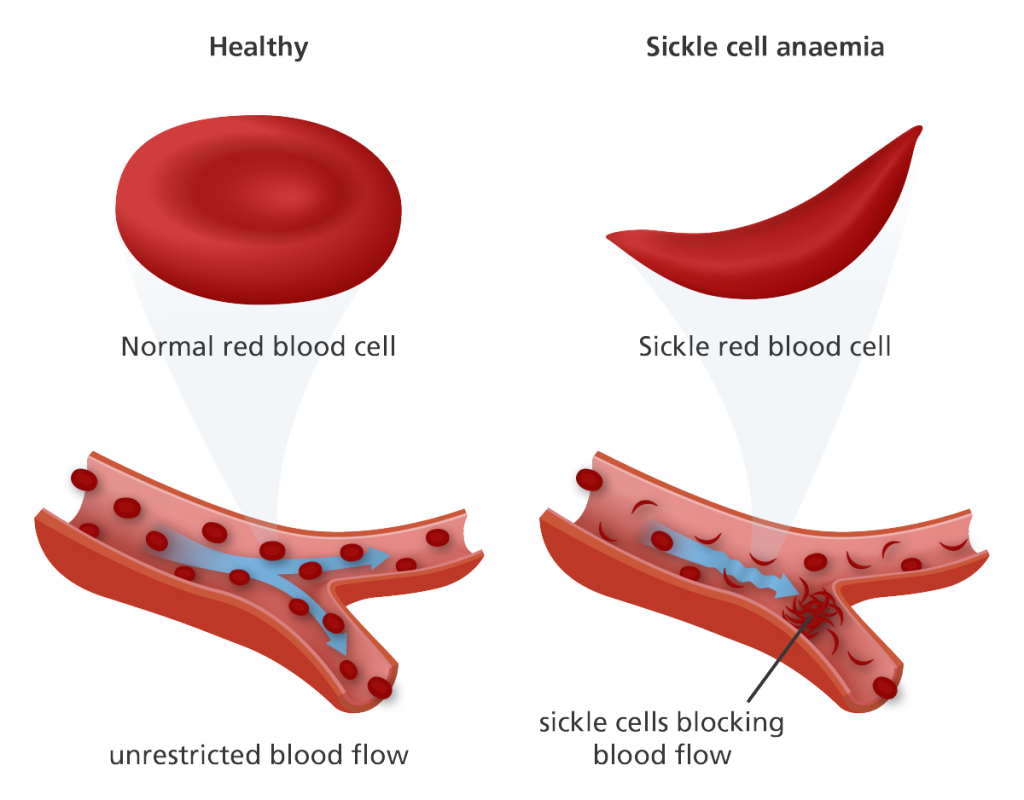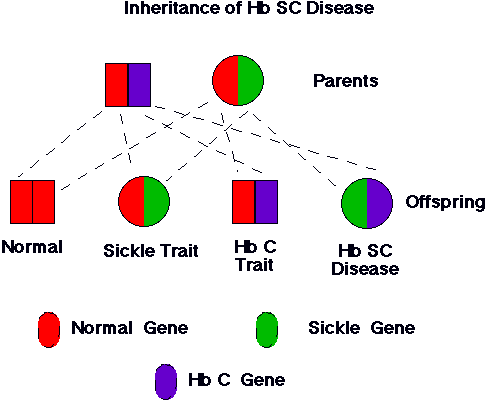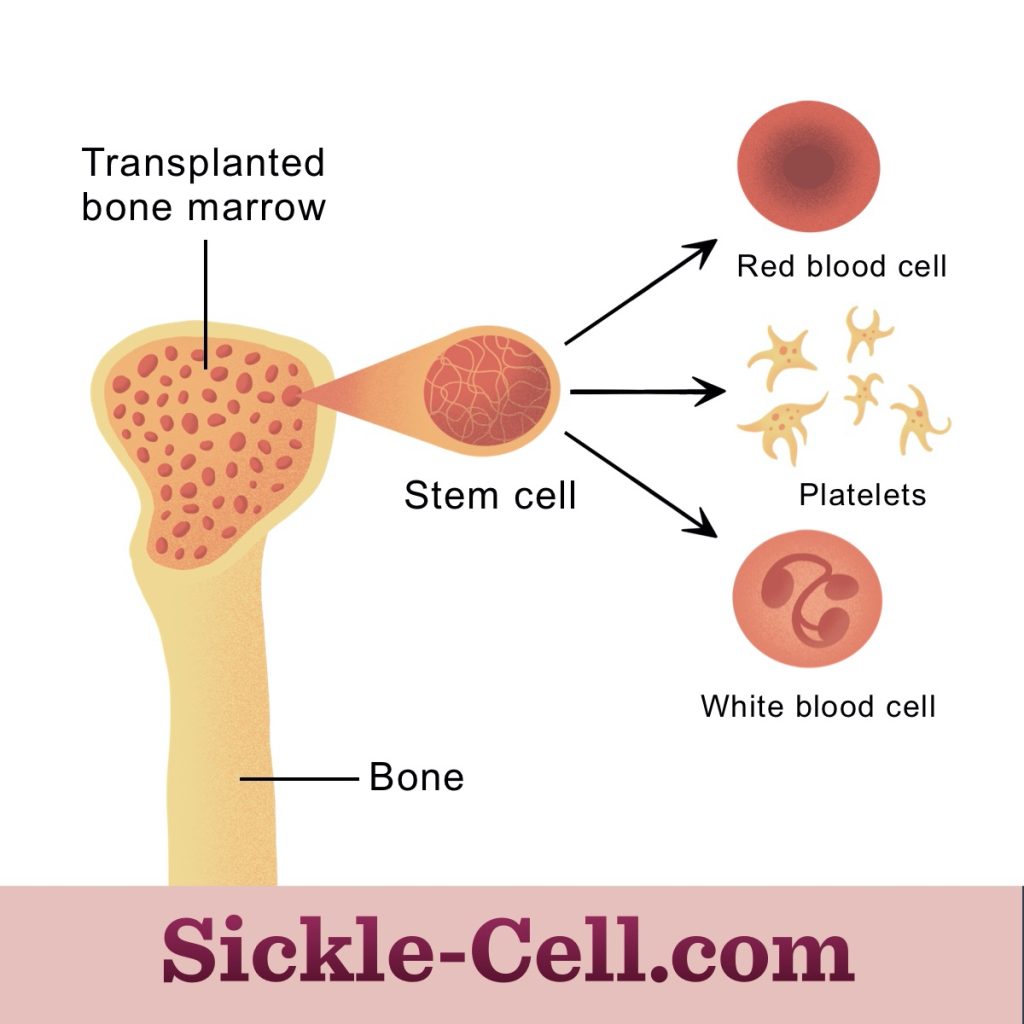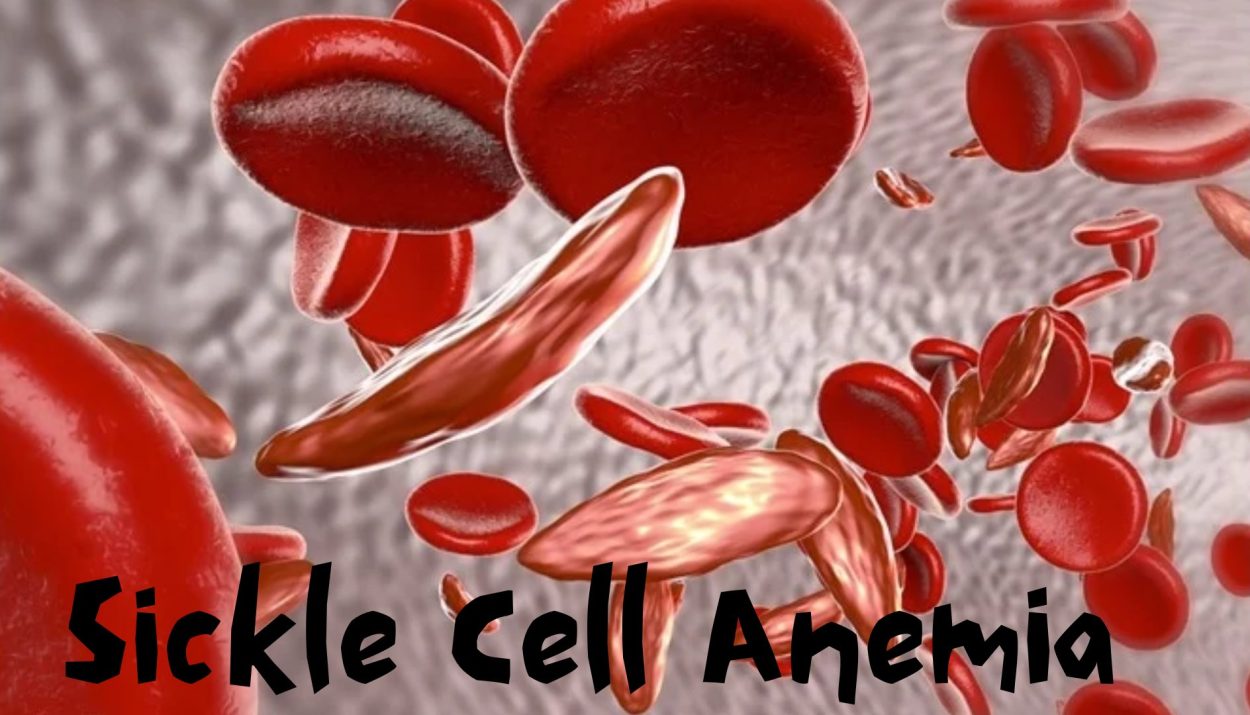Sickle cell anemia is a genetic disorder that affects the red blood cells in the body. The disorder is caused by a mutation in the gene that produces haemoglobin, the protein responsible for carrying oxygen throughout the body. As a result, the red blood cells take on a sickle or crescent shape (also rigid), rather than the typical round shape (flexible), leading to a variety of health complications.
Sickle cell anemia is most commonly found in people of African descent but can also occur in individuals of Middle Eastern, Mediterranean, or Indian descent. It affects approximately millions of people worldwide.
What Causes Sickle Cell Anemia?
Sickle cell anemia is caused by a mutation in the HBB gene, which provides instructions for making beta-globin, a component of haemoglobin. This mutation causes the production of abnormal haemoglobin, known as haemoglobin S, which causes the red blood cells to take on a sickle shape.

When red blood cells are sickled, they can’t move as easily through the blood vessels as normal round red blood cells. The sickled cells can get stuck in small blood vessels, leading to reduced blood flow and oxygen supply to various parts of the body. This can cause pain, inflammation, and damage to organs and tissues.
Sickle cell anemia is an autosomal recessive disorder, which means that an individual must inherit two copies of the mutated HBB gene (one from each parent) to develop the disease. If the sickle cell gene is inherited from only one parent, the resulting condition in the child is known as the sickle cell trait. In such cases, the child’s blood may contain a small number of sickle cells, but they do not usually experience any symptoms of the disease. However, such individuals are carriers of the sickle cell gene and can pass it on to their offspring.

Symptoms of Sickle Cell Anemia
The symptoms of sickle cell anemia can vary from person to person and can range from mild to severe. Some of the most common symptoms include:
Fatigue and weakness
Shortness of breath
Jaundice (yellowing of the skin and eyes)
Pain in the joints, bones, and abdomen
Swelling in the hands and feet
Frequent infections
Delayed growth and development
Vision problems
Priapism (painful and prolonged erection)
Diagnosis of Sickle Cell Anemia
Sickle cell anemia is typically diagnosed through a blood test that checks for the presence of haemoglobin S. If the test is positive, further tests may be done to confirm the diagnosis and determine the severity of the disease.

It’s important to diagnose sickle cell anemia early, as early treatment can help prevent or reduce the severity of complications.
Preventing Sickle Cell Anemia
Genetic counselling and testing can help individuals and couples understand their risk of having a child with sickle cell anemia. In some cases, couples may choose to use assisted reproductive technologies, such as in vitro fertilization, to avoid passing on the disease to their children.
Another important step in preventing sickle cell anemia is newborn screening. Newborn screening programs are designed to identify babies with certain genetic disorders, including sickle cell anemia so that they can receive early treatment and management. Newborn screening typically involves a simple blood test that is performed shortly after birth.
Early and ongoing medical management is also important for individuals with sickle cell anemia. This may include regular check-ups with a haematologist, pain management, and preventive measures to reduce the risk of complications such as infections and stroke.
In addition to these medical interventions, lifestyle factors can also play a role in preventing complications associated with sickle cell anemia. This includes avoiding situations that may trigger a sickle cell crisis, such as extreme temperatures or dehydration, and adopting a healthy diet and exercise routine.
Treatment Options
There is currently no cure for sickle cell anemia, but treatments can help manage symptoms and prevent complications. Vaccinations during childhood play a crucial role in preventing diseases in all children, but they are particularly critical for those with sickle cell anemia due to the potential severity of their infections.
Some of the most common treatments include:
Pain management
Pain is one of the most common symptoms of sickle cell anemia. Pain management may involve over-the-counter or prescription pain medications, as well as non-drug therapies like heat, massage, and relaxation techniques.
Blood transfusions
In severe cases of sickle cell anemia, blood transfusions may be necessary to replace damaged red blood cells with healthy ones.
Hydroxyurea
This medication can help reduce the frequency and severity of pain episodes, as well as the need for blood transfusions.
Bone marrow transplant
In some cases, a bone marrow or stem cell transplant may be an option. This involves replacing the bone marrow cells that produce abnormal haemoglobin with healthy cells from a donor.

Bone marrow is a spongy tissue found in the hollow spaces inside bones. It is responsible for the production of various types of blood cells, including red blood cells, white blood cells, and platelets. In order for a bone marrow transplant to be successful, it is important that the donor’s bone marrow is a close match to the recipient’s. Typically, siblings are the preferred donors. Bone marrow or stem cell transplants are often recommended for children with severe sickle cell disease who have not yet experienced significant organ damage.
Bone marrow transplants can be a complex and risky procedure, and patients need to be closely monitored for potential complications. However, it can also be a life-saving treatment for many patients with serious blood disorders.
Way forward
Living with sickle cell anemia can be challenging, but with proper management and support, individuals with the condition can lead full and active lives. It’s important to work closely with a healthcare team that specializes in sickle cell anemia to develop a personalized treatment plan.
In addition to medical treatment, lifestyle changes can also help manage the symptoms of sickle cell anemia. This may include staying hydrated, avoiding extreme temperatures, getting regular exercise, and managing stress.
Individuals with sickle cell anemia may also benefit from connecting with support groups or counselling services to help manage the emotional impact of the condition.
Sickle cell anemia is a complex and challenging genetic disorder that can have a significant impact on an individual’s health and quality of life. While there is currently no cure, there are a variety of treatments available to manage symptoms and prevent complications.
Reference
How Common Is Sickle Cell Disease?







